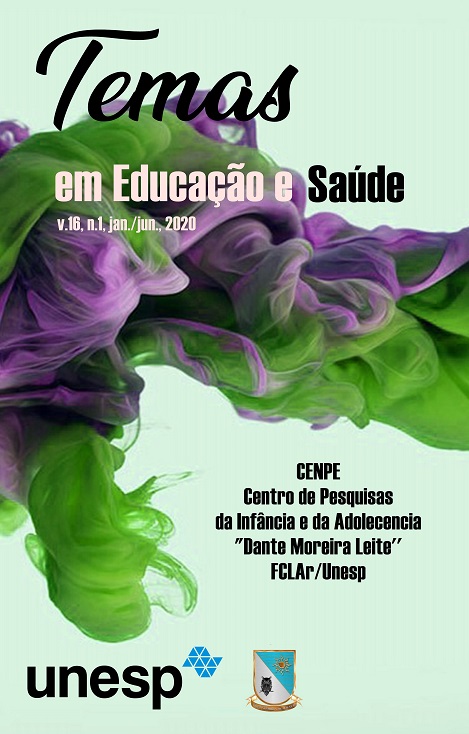The role of the teacher in school reception in cases of domestic violence with the students
DOI:
https://doi.org/10.26673/tes.v16i1.13858Keywords:
Domestic violence, Role of the teacher, School welcome.Abstract
The school and the teacher play a fundamental role in welcoming students who experience situations of violation of the integrity of their lives, in cases of aggression and abuse that may occur. Research shows that the highest incidence of violence against children and adolescents often occurs in the family environment, believing it to be a way of educating or often reproducing what they also suffered. Therefore, the objectives of this article are to understand the role of the school and the teacher in caring for the child who suffers violation; raise the rates of violence in the city of Bertioga-SP; and, to verify if the teachers perceive alteration in the learning process of this child. The article was conducted with bibliographic and documentary survey, and field research with teachers in elementary schools 1 of the peripheral and central region, with CREAS, and with the Tutelary Council of Bertioga - SP. The data collected provided evidence that teachers understand this domestic violence and that school is one of the key places to receive the victim, but not all have the mastery of legal procedures that support children who suffer violence, but most admits that this situation interferes with school performance.
Downloads
References
BRANCO, M. A. O.; TOMANIK, E. A. Violência doméstica contra crianças e adolescentes: prevenção e enfrentamento. Psicologia & Sociedade, v. 24, n. 2, p. 402-411. Disponível em: file:///C:/Users/rosan/OneDrive/Documentos/pedagogia%208º%20semestres/violência%20doméstica%20contra%20crianças%20e%20adolescentes%20prevenção%20e%20enfrentamento.pdf Acesso em: 17 out .2019.
BRASIL. Estatuto da Criança e do Adolescente. Lei n. 8.069 de 13 de julho de 1990 em seu Art. 4º. Brasília, DF: Ministério da Saúde, 1991.
BRASIL. Ministério da Saúde. Violência contra a criança e o adolescente: proposta preliminar de prevenção e assistência à violência doméstica. 1997. p. 19. Disponível em: http://lproweb.procempa.com.br/pmpa/prefpoa/sms/usu_doc/violencia_contra_a_crianca _e_o_adolescente.pdf. Acesso em: 08 out. 2019.
BRASIL. Ministério da Saúde. Linha de cuidado para atenção integral à saúde de crianças, adolescentes e suas famílias em situação de violências. 2010. p. 37. Disponível em: http://bvsms.saude.gov.br/bvs/publicacoes/linha_cuidado_criancas_familias_ violencias.pdf. Acesso em: 17 out. 2019.
CONSELHO FEDERAL DE PSICOLOGIA. Serviço de proteção social a crianças e adolescentes vítimas de violência, abuso e exploração sexual e suas famílias: referências para a atuação do psicólogo. Brasília, DF, 2009. Disponível em: https://site.cfp.org.br/wp-content/uploads/2009/10/CREPOP_Servico_Exploracao_Sexual.pdf. Acesso em: 14 out. 2019.
CONSIJ-PR CIJ-PR. Risco e violência: violência contra crianças e adolescentes. 2012. p. 18. Disponível em: http://www.crianca.mppr.mp.br/arquivos/File/publi/tj_pr/consij_ pr_risco_e_violencia_2012.pdf. Acesso em: 17 out. 2019.
LIMA, J. do R. A violência doméstica e a aprendizagem escolar. 2011. Disponível em: http://primeirainfancia.org.br/a-violencia-domestica-e-a-aprendizagem -escolar/. Acesso em: 17 out. 2019.
RISTUM, M. A violência doméstica contra crianças e as implicações da escola. Temas psicol., Ribeirão Preto, v. 18, n. 1, 2010. Disponível em: org/scielo.php?script=sci_arttext&pid=S1413-389X2010000100019. Acesso em: 14 out. 2019.
WORLD VISION INTERNATIONAL. Violências contra crianças e adolescentes: percepções públicas no Brasil, 2017. Disponível em: https://www.cenpec.org.br/wp-content/uploads/2019/07/percepcao-brasileira-violencia-criancas-ipsos.pdf. Acesso em: 17 out. 2019.
Published
How to Cite
Issue
Section
License
Os manuscritos aceitos e publicados são de propriedade da Temas em Educação e Saúde. Os artigos publicados e as referências citadas na Temas em Educação e Saúde são de inteira responsabilidade de seus autores. É vedada a tradução para outro idioma sem a autorização escrita do Editor ouvida a Comissão Editorial.







